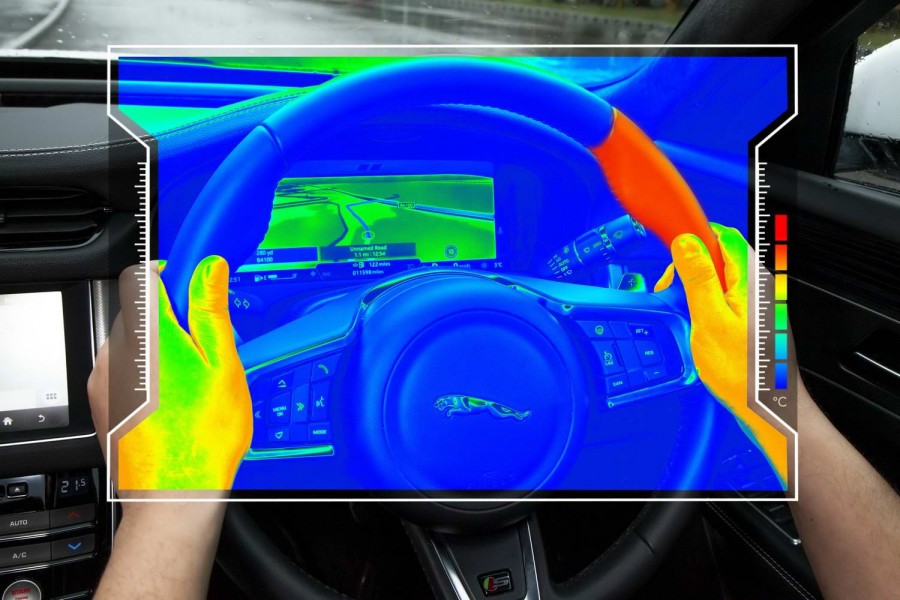What's the news?
Jaguar Land Rover (JLR) has developed a 'sensory' steering wheel, which uses rapid-heating elements to help warn drivers of any potential dangers. Developed in co-operation with Glasgow University, the steering wheel gets heated elements for the left and right hands, which can rapidly heat up and cool down, giving drivers a warning that a corner is coming up (say, in low visibility conditions).
Why heating? Well, JLR's research seems to suggest that rapidly heating up the wheel can be a more effective system for overcoming distraction than a vibration or an audible alert, especially for situations that aren't full-on emergencies. With driver distraction accounting for as many as ten per cent of all accidents in the US, it has the potential to be a useful system in keeping our minds on the task of driving.
Working in a temperature range of around six degrees celsius (which the driver can adjust) the system can also work as a warning when fuel is running low, or for upcoming events, such as points of interest. Thermal cues can also be used where audio feedback would be deemed too disruptive to cabin conversations or media playback.
Alexandros Mouzakitis, Jaguar Land Rover Electrical Research Senior Manager, said: "Safety is a number one priority for Jaguar Land Rover and we are committed to continuously improving our vehicles with the latest technological developments as well as preparing the business for a self-driving future. The 'sensory steering wheel' is all part of this vision, with thermal cues able to reduce the amount of time drivers have to take their eyes off the road. Research has shown people readily understand the heating and cooling dynamics to denote directions and the subtlety of temperature change can be perfect for certain feedback that doesn't require a more intrusive audio or vibration-based cue."
The Jaguar Land Rover-funded research is part of a PhD study undertaken by Patrizia Di Campli San Vito at Glasgow University as part of its Glasgow Interactive Systems Research Section (GIST).

